Recent Articles
Popular Makes
Body Types
2017 Nissan GT-R Road Test and Review
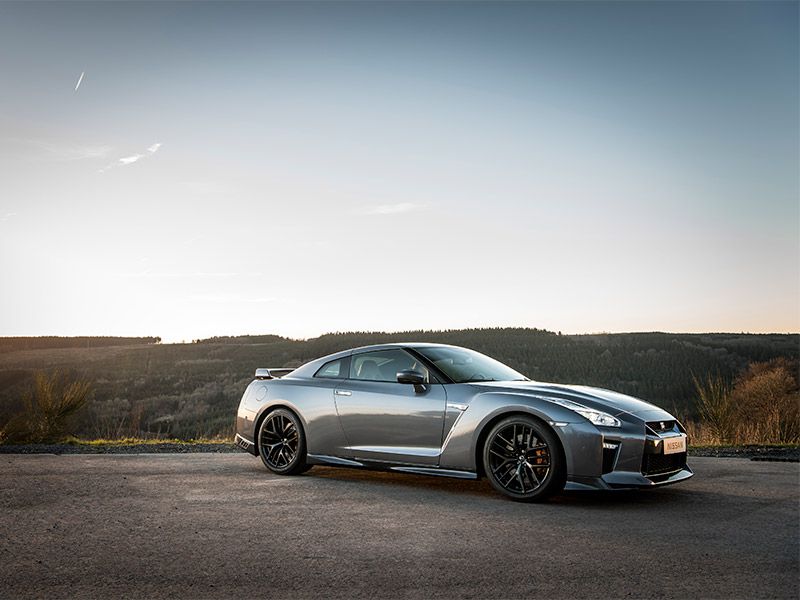
2017 Nissan GT R exterior ・ Photo by Nissan
There’s a long list of fast, erogenous and expensive cars out there in the world, more than enough to fill the parking lot at Google HQ and Warren Buffet’s birthday party on the same evening. And they come from all over the globe from manufacturers like Ferrari, Lamborghini, Mercedes-Benz, BMW, Audi, and McLaren. But only a handful of such elite high-performance cars has become legends in their own time.
The 2017 Nissan GT-R is one of those legendary machines.
Designed and built in Japan, the GT-R is a unique beast. Nicknamed Godzilla by its faithful, the all-wheel drive Nissan GT-R is one of only four supercars on the market that does not wear the badge of an exotic or luxury car brand (the Chevrolet Corvette Z06, Dodge Viper and Ford GT being the other three). And yet, it’s one of the fastest, most exclusive cars on the road. It’s also better than ever for 2017, receiving the longest list of mechanical and design improvements since it first hit the street back in 2007.
Let's take a closer look that this icon of Japanese engineering and performance.
Models and Pricing
The 2017 Nissan GT-R comes in two flavors: Hot and Hotter -- although their official names are GT-R Premium and GT-R Nismo. Both are all-wheel drive and both are powered by a twin-turbo, all-aluminum. double-overhead cam 3.8-liter V6 backed by a 6-speed automatic transmission.
Price for the GT-R Premium like our test vehicle is $111,685, including a $1,695 destination and handling fee. And it’s all the car any enthusiast driver could ever want or need, packing 565 hp and 467 lb-ft of torque.
Other standard candy are massive brakes, 20-inch wheels produced by legendary wheel manufacturer Rays and massive ultra high-performance Dunlop run-flat tires. Leather upholstery, power heated front seats, navigation, and Bluetooth are also standard. Extra-cost options are limited to paint color, interior color, and floor mats. If you want more speed, style and street cred, you step up to the GT-R Nismo for $176,685. It’s stacked with 600 hp and 481 lb-ft of torque. Other upgrades include a unique front bumper and aerodynamics package with a carbon-fiber rear spoiler. Nissan also retunes the suspension for more cornering ability and increases the rigidity of the car’s body with additional adhesive bonding.
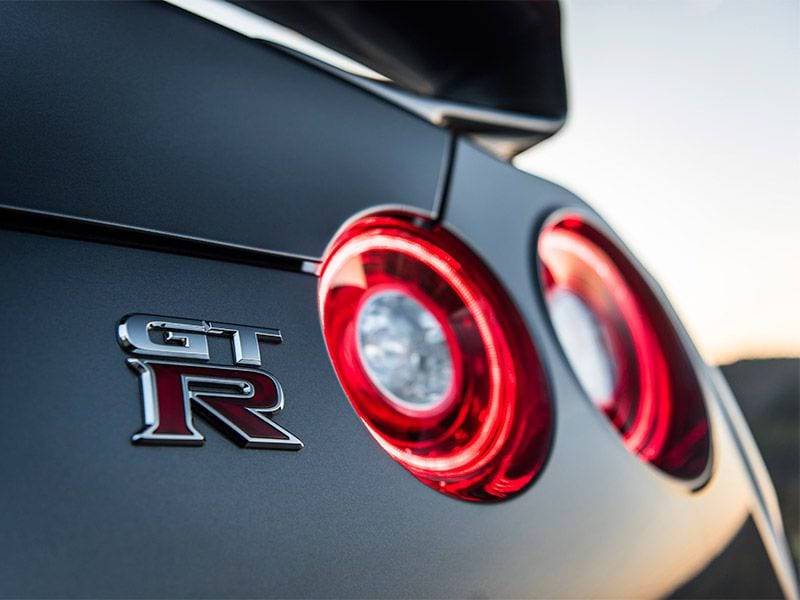
Photo by Nissan
What is Nismo?
If you haven’t heard of Nismo, relax -- you're in the majority. It's not very well known.
It stands for Nissan Motorsports International, and it was founded in September 1984 as a specialty company to support Nissan's motorsports efforts. The name, however, has only been used publicly with any scale during the last decade. In that time, the engineers at Nismo began applying some of the learnings and technology from the racing programs to Nissan’s street cars in an effort to increase their performance and image.
Think of it as an in-house tuner or hot rod shop, like BMW’s M division (known for cars like the M3 and M5), or AMG at Mercedes-Benz. So far, the GT-R Nismo, JUKE Nismo, 370Z Nismo and Sentra Nismo have reached the American market.
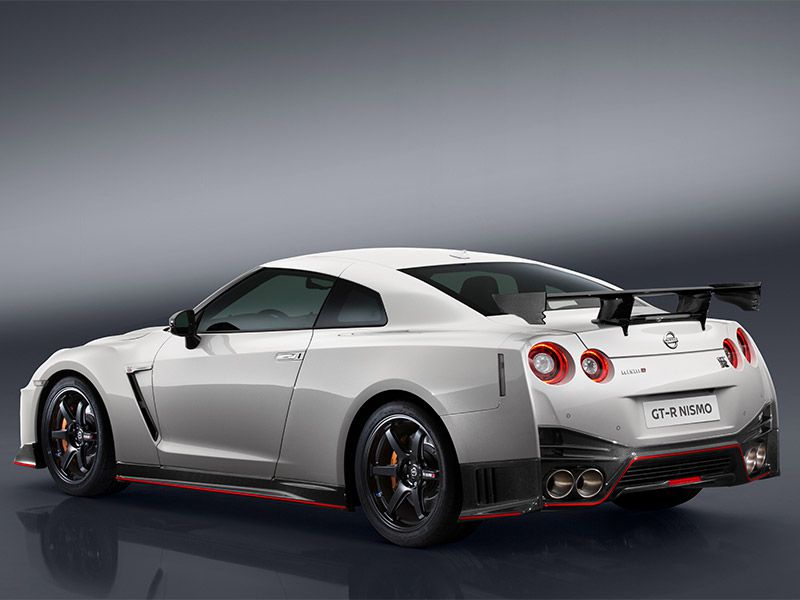
Photo by Nissan
Under the Hood
Looking under the hood of a GT-R isn’t all that pulse quickening. You’re met with a pedestrian presentation with the usual plastic engine cover and endless plumbing. It’s a bit of a yawner, considering the car’s price and performance.
And yet under all that humdrum is one of the most powerful and sophisticated engines in any car anywhere. Ever. It’s a twin-turbocharged 3.8-liter V6 with 24-valves, and each unit is handcrafted at Nissan’s assembly plant in Yokohama, Japan by one of only four master craftsmen known as "Takumi."
These expert technicians work in a clean room environment to prevent contamination of the engines, and each engine takes about 6-hours to build. These men work more like surgeons than factory workers. And when an engine is complete they put their name on it for the car’s new owner to see.
This year the engine gets a surge of 20 hp and 4 lb-ft over last year’s model due to refinements in ignition timing control and additional boost from the turbochargers. Nissan’s engineers have also added additional and welcome engine sounds to the driver’s experience with a lightweight titanium exhaust system and Active Sound Enhancement, which actually plumbs the engine's roar into the GT-R’s interior.

Photo by Nissan
Great Curb Appeal
The design of Nissan’s GT-R doesn’t seem to age. Most cars look like Betty White after 10 years on the market, their skins sagging compared to more recently designed models. Not the GT-R. It still looks fresh. And that’s an incredible testament to its original design.
This is not a small car despite its cramped interior, and it wears its size well with perfect proportions and its aggressively raked back and sloping roofline. Even after ten years on the road, when you drive by in a GT-R people notice, and when you stop they ask you about it. Especially young men.
My favorite view is from the rear. I just love the GT-R’s four massive sewer-sized exhaust pipes and four large round taillights. This year there’s a new larger "V-motion" grille, a new hood with more pronounced character lines and a new front spoiler and bumper.
Also, the side sills have been pushed out and there’s some new rear bodywork to increase aerodynamics and make the car look wider.
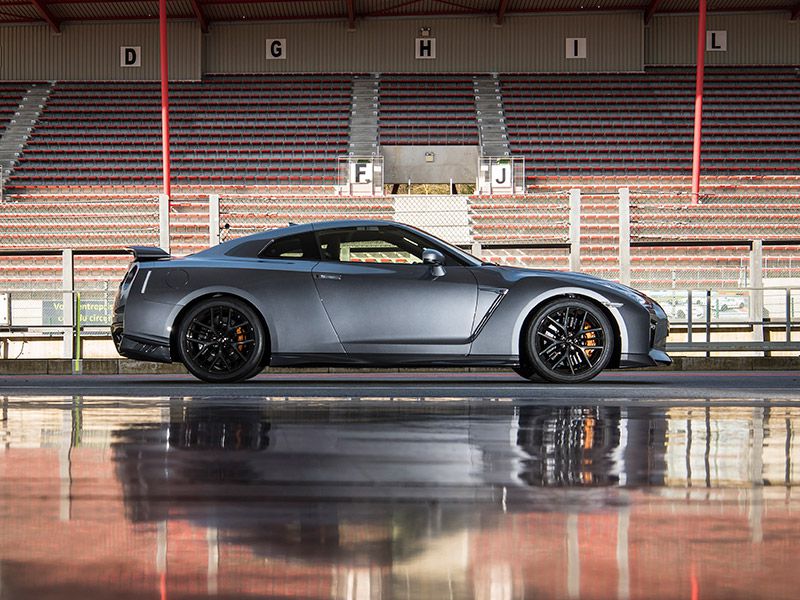
Photo by Nissan
Interior Pros and Cons
Father Time hasn’t been as kind to the GT-R’s interior, however, which seems a bit dated despite upgrades for 2017.
Improvements this year include an attractive new dash design with fewer buttons and a larger 8-inch screen. Build quality is high, and the materials used are proper for the GT-R’s lofty price point, but it’s still not as modern a design or as impressive to look at as other interiors for the money.
Nissan has finally mounted the GT-R’s paddle shifters to its new steering wheel instead of to the steering column. They now move with the wheel, which is a huge improvement. And seat comfort is better thanks to reshaped bolsters.
This car seats four according to Nissan, but only if you rear passengers are small children or adults who like the taste of their knees.
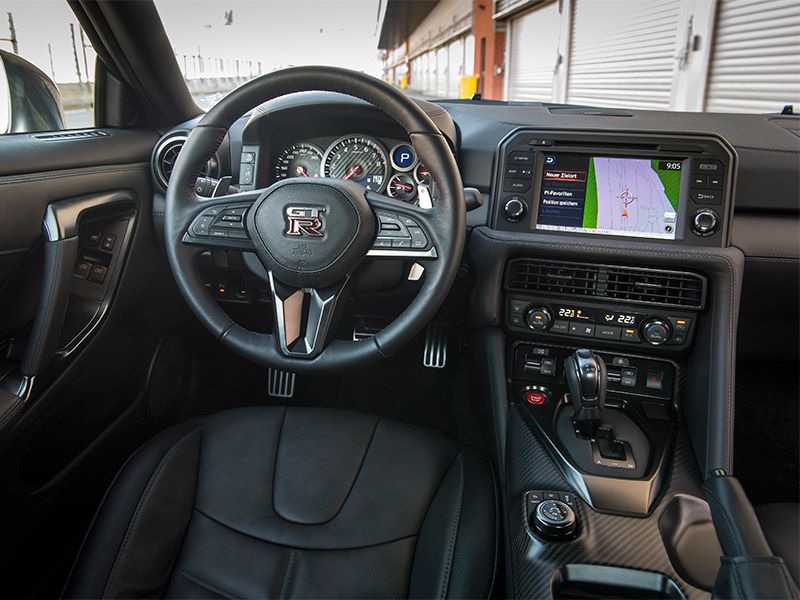
Photo by Nissan
How it Drives
Nissan’s GT-R has been sexy and fast since it first appeared 10 years ago. It has also been loud inside, a bit crude to drive and uncomfortable, due to its rough ride and tight, lumpy seats.
It’s still sexy and fast for 2017, but its shortcomings have been addressed and a GT-R Premium like our test vehicle is now a little easier to live with. First of all, it rides a bit better thanks to tweaks made to its suspension. It’s newly shaped seats are more comfortable, and it’s a good bit quieter inside due to Active Noise Cancellation technology, new sound absorption materials, and a new acoustic glass windshield. It’s no Lexus, but it no longer beats you up like it hates you.

Photo by Nissan
Technology-packed, kind of...
So much of the advanced technology packed into this supercar is designed to make it go faster, from it finely tuned aerodynamics to the precision of its twin-turbocharged engines and electronically controlled all-wheel drive system.
However, the GT-R is without other types of tech buyers at this price point expect. Things like radar cruise control or a blind spot monitoring are not available on the GT-R. Neither is there an available lane departure warning system or a rear cross-traffic alert system. These driver aids are available on cars costing much less.
The new GT-R’s NissanConnect system, however, does allow you to use your smartphone to remotely lock or unlock the car doors, call emergency services, or track the car if it is stolen.
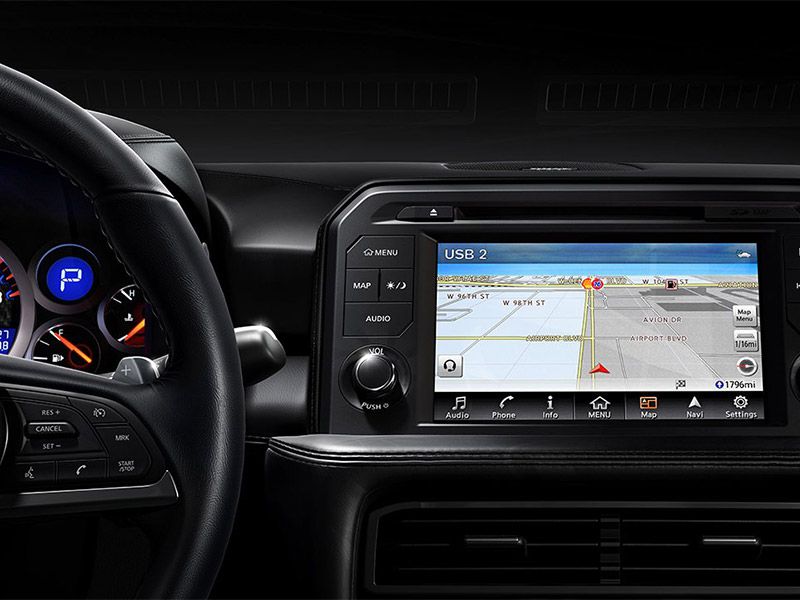
Photo by Nissan
Stiff Competition
Most of the GT-R’s competitors are two-seat sports cars. Cars like the Chevy Corvette, Audi R8 and Mercedes-Benz GTS AMG. But there is one exception. It’s the GT-R’s main competition and it also happens to be one of the finest cars available. It’s the Porsche 911.
Like the GT-R, the 911 has four seats. And like the GT-R, it is sexy and ridiculously fast. And like the GT-R the 911 is powered by a twin-turbocharged six cylinder engine.
But the 911, which carries the cache of the Porsche crest, is cheaper than the GT-R. Prices start at about $90,000 for a standard coupe with 370 hp. It doesn’t seem like a lot compared to the Nissan, but the 911 is much lighter so it’ll keep up just fine. The 911 also offers all-wheel drive for the colder climates and it’s available as a convertible while the GT-R is not.
Then there’s the 911 Turbo, which undercuts the GT-R Nismo’s price by about $20,000 and packs 580 hp. It is all-wheel drive and is also offered as a coupe and convertible.

Final Thoughts
For those in the market for a sexy high-performance coupe, the 2017 Nissan GT-R is a very desirable overall choice.
This car is something special. It’s more than the sum of its parts. And it is packed with personality. Although its interior design isn’t as modern as some of its competition, and its driving experience isn’t as refined, the GT-R is comfortable enough to be driven every day and it’s one of the coolest, fastest and best-performing cars you can buy as any price.
Which is why the 2017 Nissan GT-R won the Coupe category in the first annual “Autobytel Buyer’s Choice Awards.

Photo by Nissan